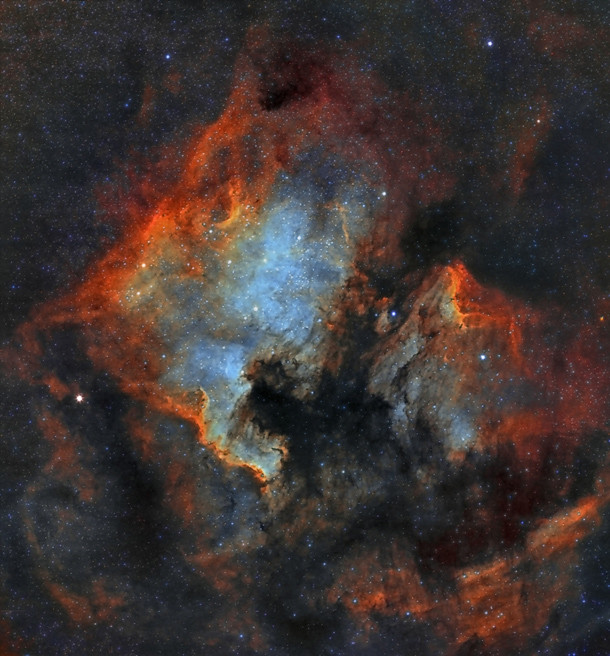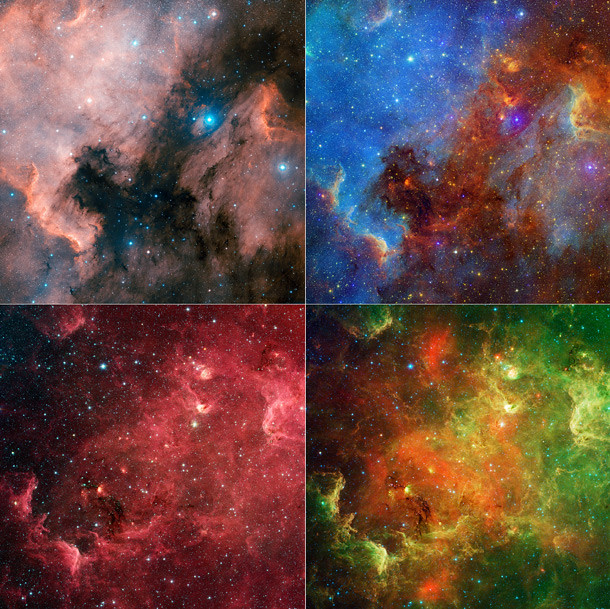Create a free profile to get unlimited access to exclusive videos, sweepstakes, and more!
7000

According to my software, this blog post you are reading is the 7000th article I have published on the Bad Astronomy Blog.
Wow.
That's a lot of words. It's also a lot of astronomy, geekery, science, antiscience, web comics, puns, embiggenates, and "Holy Haleakala!"s (61, to be exact, plus this one to make 62).
I am generally not one to wade into maudlin celebrations of arbitrary numbers, so instead I'll celebrate this milestone by showing you something appropriate: the North America Nebula, taken by Mexican astronomer César Cantú.
[Click to encontinentenate.]
Why is this appropriate? Because the New General Catalog of astronomical objects - familiar to and used by astronomers across the planet - lists it as entry number 7000.
And it should be obvious why it's named as it is.
Of course, I can't leave you with just a pretty picture. This nebula is something of a mystery; we don't know how big it is or how far away it lies. In the sky, it's very near the star Deneb - which marks the tail of the swan constellation Cygnus - and Deneb is a massive, hot, and luminous star. It's possible the gas in the nebula is glowing due to the light from Deneb; if so NGC 7000 is about 1800 light years away and over 100 light years across.
It's the site of furious star formation, too, with stars being born all along the bright sharp region which look like Mexico and Central America. The "Gulf of Mexico" region - the darker area with fewer stars - is actually the location of thick interstellar dust that blocks the light from the stars behind it. Visible light, that is; the dust glow in the infrared, so if you look at it with a telescope that sees IR like the Spitzer Space Telescope, what is invisible becomes ethereally visible:
This mosaic shows the North America Nebula in different wavelengths of light: in the upper left is visible light; the upper right is visible plus infrared, so you can see the two together; the lower left shows infrared light from 3.6 to 8 microns (roughly 5 - 11 times the longest wavelength the human eye can detect), and the lower right is similar but going out to 24 microns, over 30 times the wavelength we can see. The visible light images show the gas, while the infrared show not only the dust, but the warm spots where stars are being born, their new light penetrating the surrounding cocoons of material, reaching across space, and finally ending its journey here on Earth where we can detect it and learn from it.
I've struck upon many ideas for this blog over the past seven years, six months, and one week I've been writing it, but one of the most important is this: not everything is as it seems. Whether it's someone's opinion, a "fact", a picture, an argument, or even a vast sprawling cloud of gas and baby stars a thousand trillion kilometers across, this much is what astronomy and critical thinking has taught me: What you see depends very much on how you see it. And if you want a more complete picture, something that ever-approaches reality, you must view the Universe with different eyes and with an open, but trained mind. Only then will you not get fooled, and not fool yourself.
Thank you honestly and sincerely to everyone who's been along with me this far into the ride, here on my 7000th milestone. There's still a long way to go, of course, but it's the journey itself that's so much fun!
Image credits: César Cantú; NASA/JPL-Caltech/L. Rebull (SSC/Caltech)/D. De Martin




























